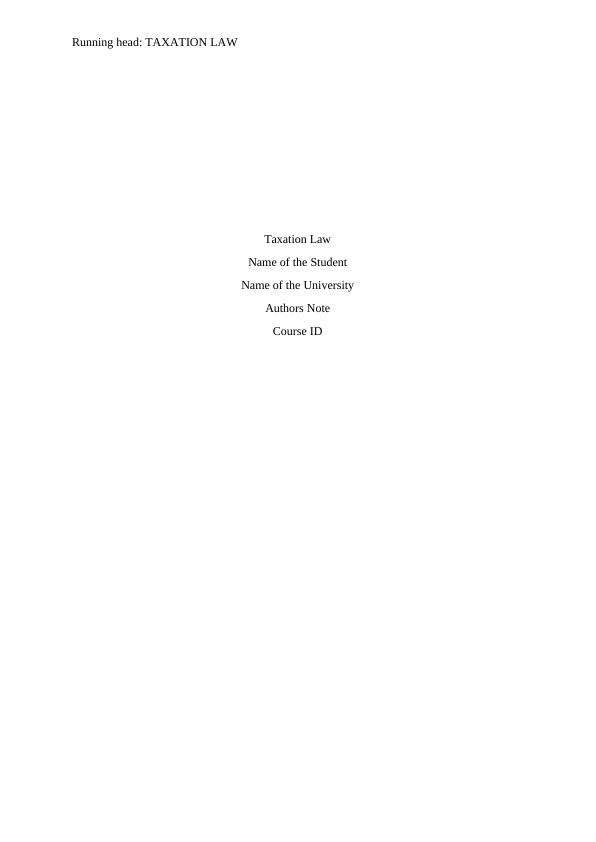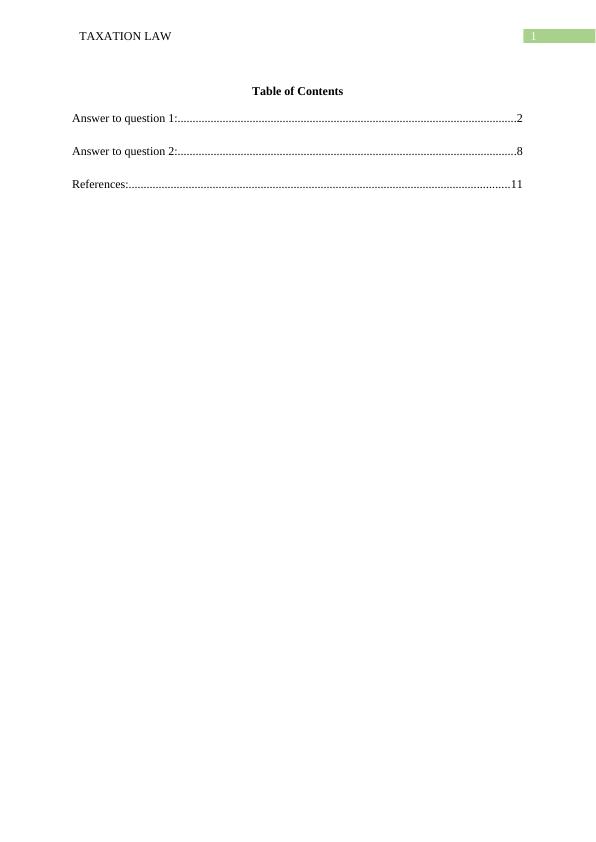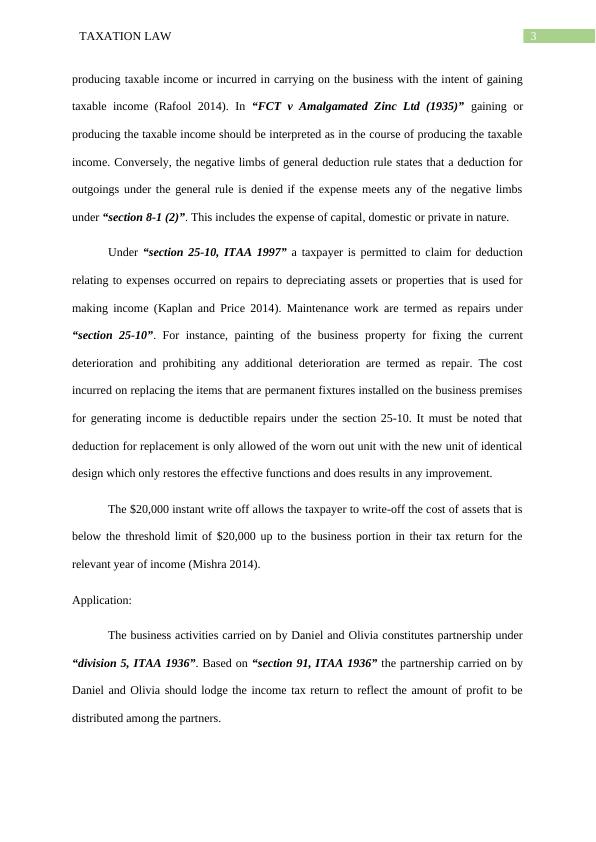Taxation Law: Determination of Net Income of Partnership and Fringe Benefit Tax
Added on 2023-04-25
13 Pages2614 Words270 Views
End of preview
Want to access all the pages? Upload your documents or become a member.
TAXATION LAW Taxation Law Name of the University Authors
|13
|2737
|310
Taxation Law: Partnership Net Income and Expense Payment Fringe Benefit
|12
|2661
|103
Taxation Law: Partnership Net Income and Fringe Benefits Tax
|12
|2589
|64
Taxation Law: Calculation of Net Income from Partnership and Fringe Benefit Taxation
|13
|2590
|334
Taxation Law Case Study: Determination of Partnership Net Income, Expenses, and Deductions
|13
|2530
|341
Taxation Law Assignment: Net Income of Partnership and Fringe Benefit Tax
|12
|2624
|156




